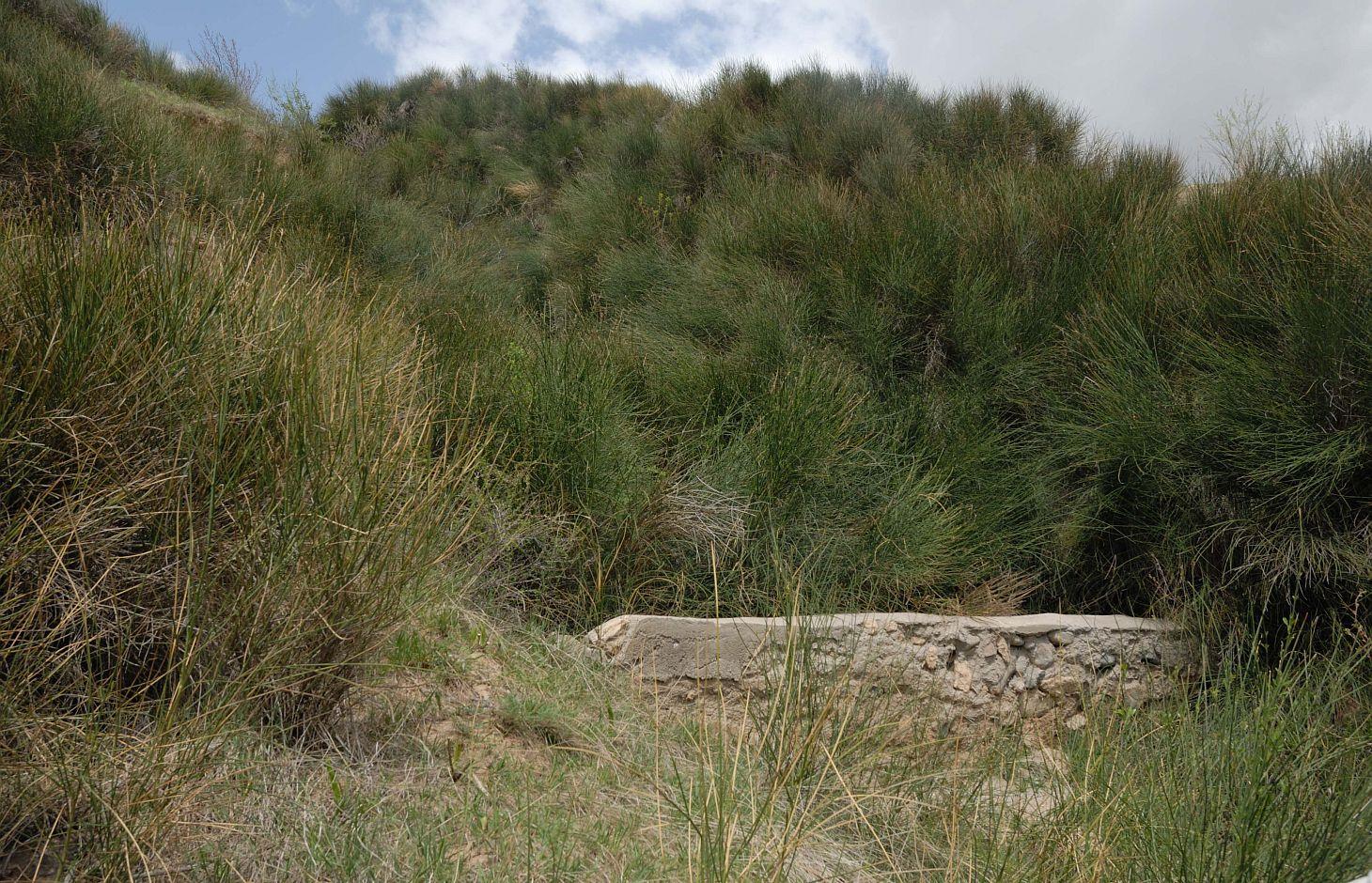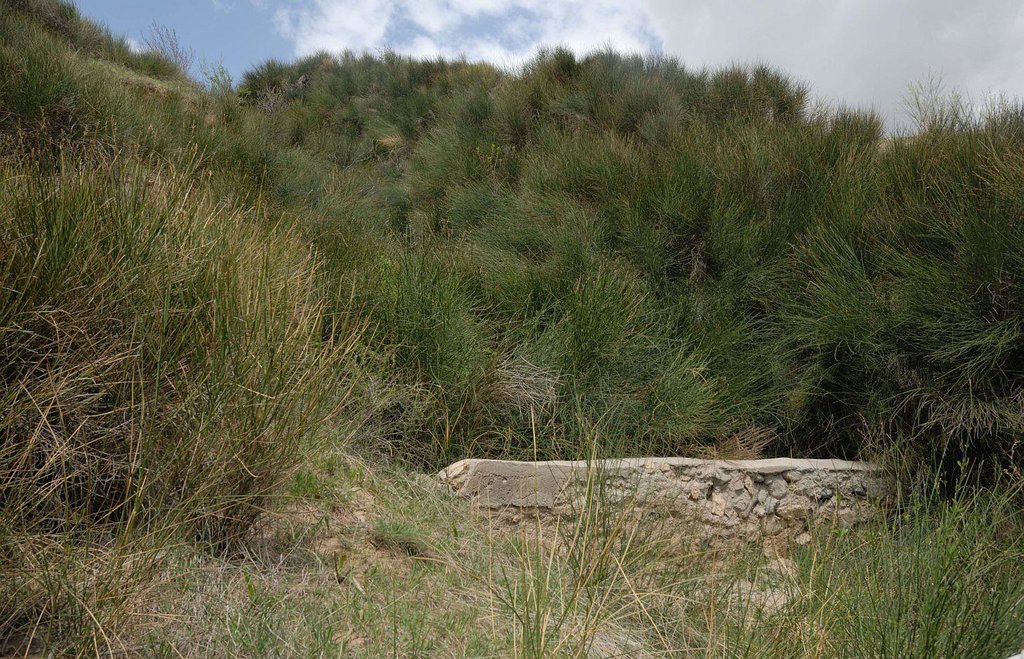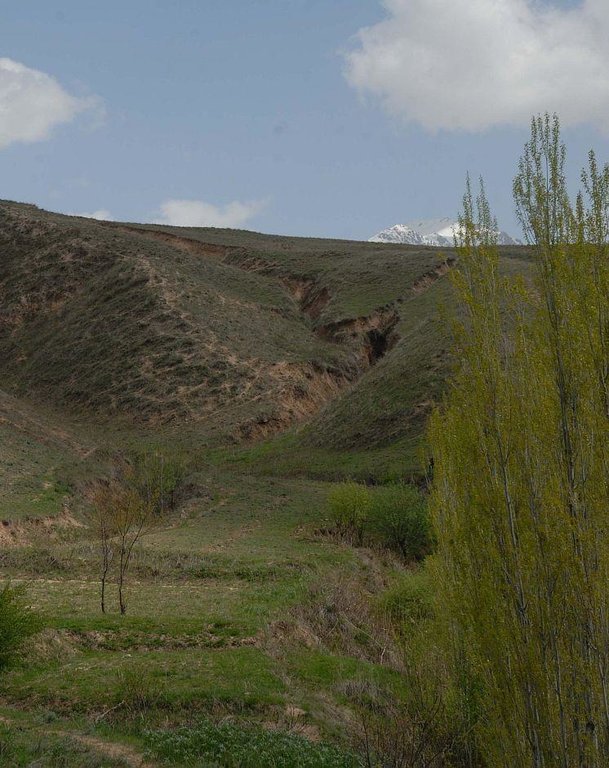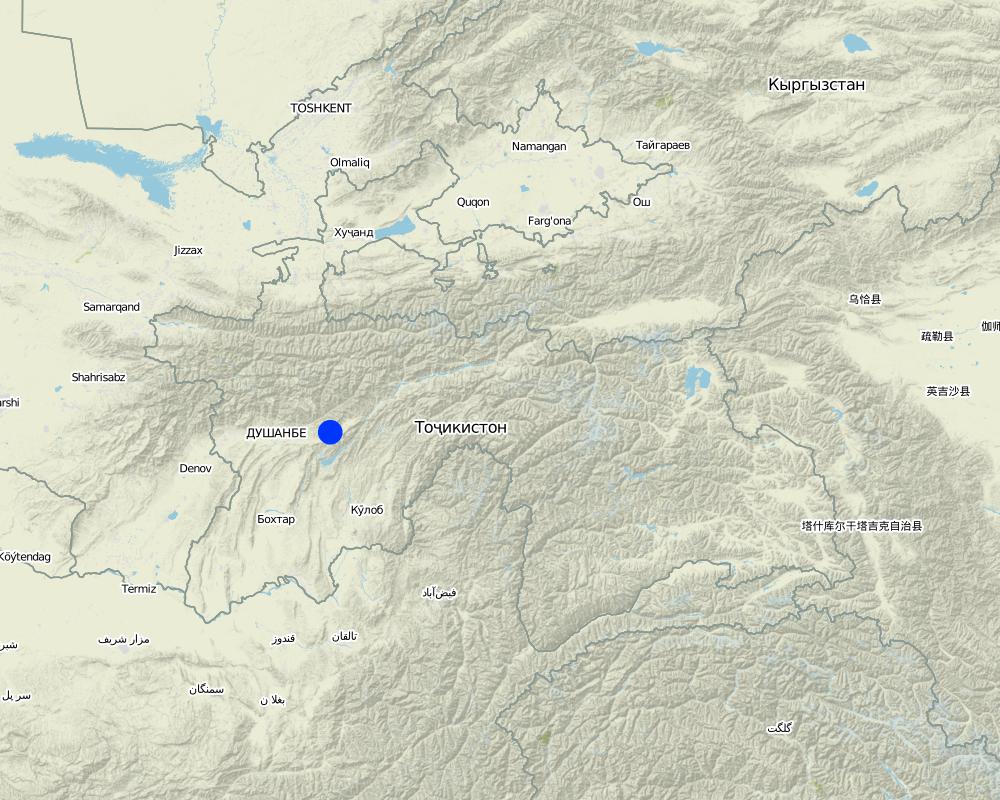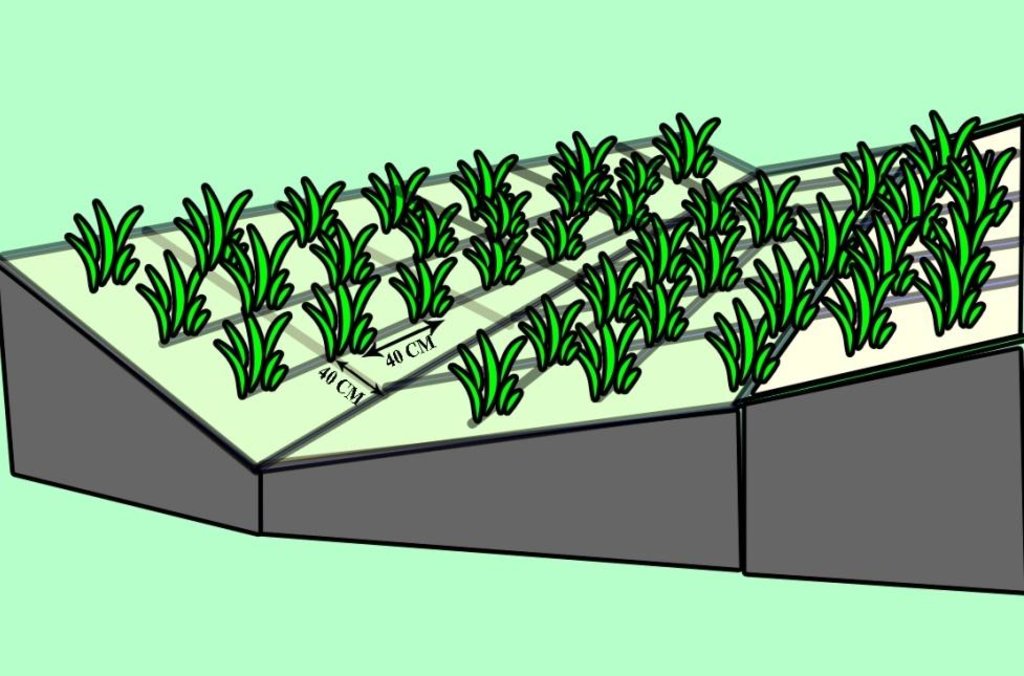Gully rehabilitation [Tajikistan]
- Creation:
- Update:
- Compiler: Qobiljon Shokirov
- Editor: –
- Reviewers: David Streiff, Alexandra Gavilano
technologies_1541 - Tajikistan
View sections
Expand all Collapse all1. General information
1.2 Contact details of resource persons and institutions involved in the assessment and documentation of the Technology
SLM specialist:
Boev Jahonbek
Tajik Soil Institute
Tajikistan
Name of the institution(s) which facilitated the documentation/ evaluation of the Technology (if relevant)
Tajik Soil Insitute (Tajik Soil Institute) - TajikistanName of the institution(s) which facilitated the documentation/ evaluation of the Technology (if relevant)
NCCR North-South (NCCR North-South) - Kyrgyzstan1.3 Conditions regarding the use of data documented through WOCAT
The compiler and key resource person(s) accept the conditions regarding the use of data documented through WOCAT:
Yes
1.5 Reference to Questionnaire(s) on SLM Approaches (documented using WOCAT)

Field research station for analysing soil conservation measures [Tajikistan]
Research Station of the Tajik Academy of Agrarian Science, Soil Institute conducting research on soil conservation and productivity in the rainfed hill zones of central Tajikistan.
- Compiler: Gulniso Nekushoeva
2. Description of the SLM Technology
2.1 Short description of the Technology
Definition of the Technology:
Gullies are stabilized through the establishment of a gabion and the plantation of spanish drok (Spartium junceum L).
2.2 Detailed description of the Technology
Description:
The research station of the Soil Science Institute tested the stabilisation of large gullies created by water erosion through the plantation of Spanish drok (Spartium junceum L). The plantation of Spanish drok was introduced in 1972 for the first time in the research field station. Spanish drok is a perennial plant and has the ability of spreading fast through its roots and also via seeds. Most of the gullies are covered with Spanish drok by now. In total 150,000 seedlings were planted at the research station.
Purpose of the Technology: Water erosion is highly threatening croplands by washing away the fertile topsoil. Severe gullies have formed on the hilly slopes. The research station of the soil institute therefore selected a number of gullies to test different techniques of rehabilitation.
Establishment / maintenance activities and inputs: In a first step a survey of gullies in the vicinity of the research station was conducted in order to determine an appropriate place for testing the stabilization. Spanish drok was planted and spread very fast through vegetative underground reproduction until the whole gully was covered. A gabion made out of stone and concrete was constructed at the foot of the gully. It contains a pipe to allow for outflow of excess water. Maintenance of the technology is less cost efficient and doesn't involve much cost associated activities.
Natural / human environment: The positive results of the implementation of this technology are very important as there is a great need for spreading it to other areas suffering from the same problems in Tajikistan. Spanish drok is generally not available in Tajikistan. Nowadays, the research station is providing seedlings for sale to interested farmers with a cost of roughly $ 0.40 per seedling.
2.3 Photos of the Technology
2.5 Country/ region/ locations where the Technology has been applied and which are covered by this assessment
Country:
Tajikistan
Region/ State/ Province:
RRS
Further specification of location:
Javanon, Karsang
Map
×2.6 Date of implementation
If precise year is not known, indicate approximate date:
- 10-50 years ago
2.7 Introduction of the Technology
Specify how the Technology was introduced:
- during experiments/ research
Comments (type of project, etc.):
through the Karsang field research station
3. Classification of the SLM Technology
3.1 Main purpose(s) of the Technology
- reduce, prevent, restore land degradation
3.2 Current land use type(s) where the Technology is applied

Cropland
- Annual cropping
- Tree and shrub cropping
- spanish drop
Specify:
Longest growing period from month to month: April through November
Comments:
Major land use problems (land users’ perception): loss of arable land, development of gullies, water erosion
3.4 Water supply
Water supply for the land on which the Technology is applied:
- rainfed
3.5 SLM group to which the Technology belongs
- improved ground/ vegetation cover
- cross-slope measure
3.6 SLM measures comprising the Technology

vegetative measures
- V1: Tree and shrub cover

structural measures
- S5: Dams, pans, ponds
Comments:
Main measures: vegetative measures, structural measures
Type of vegetative measures: scattered / dispersed
3.7 Main types of land degradation addressed by the Technology

soil erosion by water
- Wg: gully erosion/ gullying
- Wo: offsite degradation effects
Comments:
Main type of degradation addressed: Wg: gully erosion / gullying, Wo: offsite degradation effects
Main causes of degradation: overgrazing, Heavy / extreme rainfall (intensity/amounts) (It usually rains in March-April with duration of 20-45 minutes)
Secondary causes of degradation: wind storms / dust storms (Wind storms in winter), droughts (Hot summer months without rain)
3.8 Prevention, reduction, or restoration of land degradation
Specify the goal of the Technology with regard to land degradation:
- reduce land degradation
4. Technical specifications, implementation activities, inputs, and costs
4.1 Technical drawing of the Technology
Technical specifications (related to technical drawing):
Scheme of how the Spanish Drok was planted on a eroded slopes of Karsang Research Field Station.
Location: Karsang Research Field Station. Javonon, Karsang
Date: 16-07-2012
Technical knowledge required for field staff / advisors: high
Technical knowledge required for land users: moderate
Main technical functions: control of concentrated runoff: retain / trap, improvement of ground cover, stabilisation of soil (eg by tree roots against land slides)
Scattered / dispersed
Number of plants per (ha): 5000
Spacing between rows / strips / blocks (m): 0.3
Vertical interval within rows / strips / blocks (m): 0.2
Trees/ shrubs species: Spanish drop.
Slope (which determines the spacing indicated above): 25%
Wall/ barrier
Depth of ditches/pits/dams (m): 1.2
Height of bunds/banks/others (m): 1.2
Width of bunds/banks/others (m): 0.2
Length of bunds/banks/others (m): 3.5
Construction material (stone): stone and concrete was used for the establishment of the gabion
Construction material (concrete): stone and concrete was used for the establishment of the gabion
Author:
Q. Shokirov
4.2 General information regarding the calculation of inputs and costs
other/ national currency (specify):
Somoni
If relevant, indicate exchange rate from USD to local currency (e.g. 1 USD = 79.9 Brazilian Real): 1 USD =:
4.5
Indicate average wage cost of hired labour per day:
7.00
4.3 Establishment activities
| Activity | Timing (season) | |
|---|---|---|
| 1. | Selection of area | early spring |
| 2. | Planting of spanish drop | early march |
| 3. | Construction of gabion |
4.4 Costs and inputs needed for establishment
| Specify input | Unit | Quantity | Costs per Unit | Total costs per input | % of costs borne by land users | |
|---|---|---|---|---|---|---|
| Labour | Selection of area | Persons/day | 30.0 | 30.0 | 900.0 | |
| Labour | Planting of spanish drop | Persons/day | 36.0 | 30.0 | 1080.0 | |
| Labour | Construction of gabion | Gabion | 1.0 | 700.0 | 700.0 | |
| Construction material | Stones | Gabion | 1.0 | 800.0 | 800.0 | |
| Total costs for establishment of the Technology | 3480.0 | |||||
| Total costs for establishment of the Technology in USD | 773.33 | |||||
If land user bore less than 100% of costs, indicate who covered the remaining costs:
Tajik Soil Institue
Comments:
Duration of establishment phase: 1 month(s)
4.5 Maintenance/ recurrent activities
| Activity | Timing/ frequency | |
|---|---|---|
| 1. | As the plant spreads through root propagation, the dispersal has to be limited by removing some of the plants every year |
4.7 Most important factors affecting the costs
Describe the most determinate factors affecting the costs:
buying seeds, tools, additional labor cost needs to be filled out more.
5. Natural and human environment
5.1 Climate
Annual rainfall
- < 250 mm
- 251-500 mm
- 501-750 mm
- 751-1,000 mm
- 1,001-1,500 mm
- 1,501-2,000 mm
- 2,001-3,000 mm
- 3,001-4,000 mm
- > 4,000 mm
Agro-climatic zone
- semi-arid
Thermal climate class: temperate
5.2 Topography
Slopes on average:
- flat (0-2%)
- gentle (3-5%)
- moderate (6-10%)
- rolling (11-15%)
- hilly (16-30%)
- steep (31-60%)
- very steep (>60%)
Landforms:
- plateau/plains
- ridges
- mountain slopes
- hill slopes
- footslopes
- valley floors
Altitudinal zone:
- 0-100 m a.s.l.
- 101-500 m a.s.l.
- 501-1,000 m a.s.l.
- 1,001-1,500 m a.s.l.
- 1,501-2,000 m a.s.l.
- 2,001-2,500 m a.s.l.
- 2,501-3,000 m a.s.l.
- 3,001-4,000 m a.s.l.
- > 4,000 m a.s.l.
Indicate if the Technology is specifically applied in:
- concave situations
5.3 Soils
Soil depth on average:
- very shallow (0-20 cm)
- shallow (21-50 cm)
- moderately deep (51-80 cm)
- deep (81-120 cm)
- very deep (> 120 cm)
Soil texture (topsoil):
- medium (loamy, silty)
Topsoil organic matter:
- low (<1%)
If available, attach full soil description or specify the available information, e.g. soil type, soil PH/ acidity, Cation Exchange Capacity, nitrogen, salinity etc.
Soil fertility is low
Soil drainage / infiltration is medium
Soil water storage capacity is low
5.4 Water availability and quality
Ground water table:
5-50 m
Availability of surface water:
medium
Water quality (untreated):
good drinking water
5.5 Biodiversity
Species diversity:
- medium
5.6 Characteristics of land users applying the Technology
Market orientation of production system:
- subsistence (self-supply)
- mixed (subsistence/ commercial)
Relative level of wealth:
- poor
- average
Individuals or groups:
- individual/ household
Level of mechanization:
- manual work
Gender:
- women
- men
Indicate other relevant characteristics of the land users:
Land users applying the Technology are mainly common / average land users
Annual population growth: 1% - 2%
10% of the land users are average wealthy.
90% of the land users are poor.
5.7 Average area of land used by land users applying the Technology
- < 0.5 ha
- 0.5-1 ha
- 1-2 ha
- 2-5 ha
- 5-15 ha
- 15-50 ha
- 50-100 ha
- 100-500 ha
- 500-1,000 ha
- 1,000-10,000 ha
- > 10,000 ha
Is this considered small-, medium- or large-scale (referring to local context)?
- small-scale
5.8 Land ownership, land use rights, and water use rights
Land ownership:
- state
Land use rights:
- open access (unorganized)
Comments:
Research station belongs to the State, but land is leased to the local farmers for use.
5.9 Access to services and infrastructure
health:
- poor
- moderate
- good
education:
- poor
- moderate
- good
technical assistance:
- poor
- moderate
- good
employment (e.g. off-farm):
- poor
- moderate
- good
markets:
- poor
- moderate
- good
energy:
- poor
- moderate
- good
roads and transport:
- poor
- moderate
- good
drinking water and sanitation:
- poor
- moderate
- good
financial services:
- poor
- moderate
- good
6. Impacts and concluding statements
6.1 On-site impacts the Technology has shown
Socio-economic impacts
Production
wood production
Comments/ specify:
Spanish drok is used as firewood, increased availability
production area
Comments/ specify:
Prevents gullies from spreading and destroying production area
Income and costs
workload
Comments/ specify:
No need to take care of eroded land every year
Socio-cultural impacts
SLM/ land degradation knowledge
Comments/ specify:
Farmers are aware of erosion problems and benefits of Spanish drok
Livelihood and human well-being
Comments/ specify:
Many farmers have now understanding of mitigating soil erosion by water with the use of Spanish Drok.
Ecological impacts
Water cycle/ runoff
surface runoff
groundwater table/ aquifer
evaporation
Soil
soil moisture
soil cover
soil loss
Biodiversity: vegetation, animals
biomass/ above ground C
habitat diversity
Climate and disaster risk reduction
emission of carbon and greenhouse gases
6.2 Off-site impacts the Technology has shown
downstream flooding
buffering/ filtering capacity
damage on neighbours' fields
6.3 Exposure and sensitivity of the Technology to gradual climate change and climate-related extremes/ disasters (as perceived by land users)
Gradual climate change
Gradual climate change
| Season | increase or decrease | How does the Technology cope with it? | |
|---|---|---|---|
| annual temperature | increase | well |
Climate-related extremes (disasters)
Meteorological disasters
| How does the Technology cope with it? | |
|---|---|
| local windstorm | well |
Climatological disasters
| How does the Technology cope with it? | |
|---|---|
| drought | well |
Other climate-related consequences
Other climate-related consequences
| How does the Technology cope with it? | |
|---|---|
| reduced growing period | well |
6.4 Cost-benefit analysis
How do the benefits compare with the establishment costs (from land users’ perspective)?
Short-term returns:
neutral/ balanced
Long-term returns:
very positive
How do the benefits compare with the maintenance/ recurrent costs (from land users' perspective)?
Short-term returns:
positive
Long-term returns:
very positive
Comments:
Full establishment of the Spanish drok takes about 10 years, however, through the establishment of the gabion some immediate benefits occur
6.5 Adoption of the Technology
- single cases/ experimental
If available, quantify (no. of households and/ or area covered):
NA
Of all those who have adopted the Technology, how many did so spontaneously, i.e. without receiving any material incentives/ payments?
- 0-10%
Comments:
Comments on acceptance with external material support: The technology was implemented through the research station using their employees.
There is a little trend towards spontaneous adoption of the Technology
Comments on adoption trend: Earlier Spanish drok was not yet known among the farmers as it is an exotic species. A handful of farmers have been interested and adopted the technology in their plots. According to farmers from the station more people are interested applying such technologies as a protection for soil erosion and establishment of gabions.
6.7 Strengths/ advantages/ opportunities of the Technology
| Strengths/ advantages/ opportunities in the land user’s view |
|---|
| Affordable technology for land restoration and degraded plots. |
| Strengths/ advantages/ opportunities in the compiler’s or other key resource person’s view |
|---|
| Effectively puts a halt to water erosion. |
| The bushes provide valuable firewood for the local land users. |
| A special microclimate is created through the establishment of the plants with humidity being preserved all year long and birds and bees seem to use it as a preferred habitat. |
6.8 Weaknesses/ disadvantages/ risks of the Technology and ways of overcoming them
| Weaknesses/ disadvantages/ risks in the compiler’s or other key resource person’s view | How can they be overcome? |
|---|---|
| The planting material is generally not available in Tajikistan, only now the research station is selling it to interested farmers, however, availability is still very localised. | Farmer to farmer spreading of planting material in addition to providing planting material to the different tree nurseries in the country. |
| Spanish drok is very easily inflammable in the dry summermonths due to essential oils which can pose a potential risk. | Good care has to be taken during the dry period and maybe some warning signs put up to tell people not to drop their cigarette stumps. |
| For the coverage of a whole gully with spanish drok about 10 years are needed as it happens through natural root propagation. |
7. References and links
7.1 Methods/ sources of information
Links and modules
Expand all Collapse allLinks

Field research station for analysing soil conservation measures [Tajikistan]
Research Station of the Tajik Academy of Agrarian Science, Soil Institute conducting research on soil conservation and productivity in the rainfed hill zones of central Tajikistan.
- Compiler: Gulniso Nekushoeva
Modules
No modules


